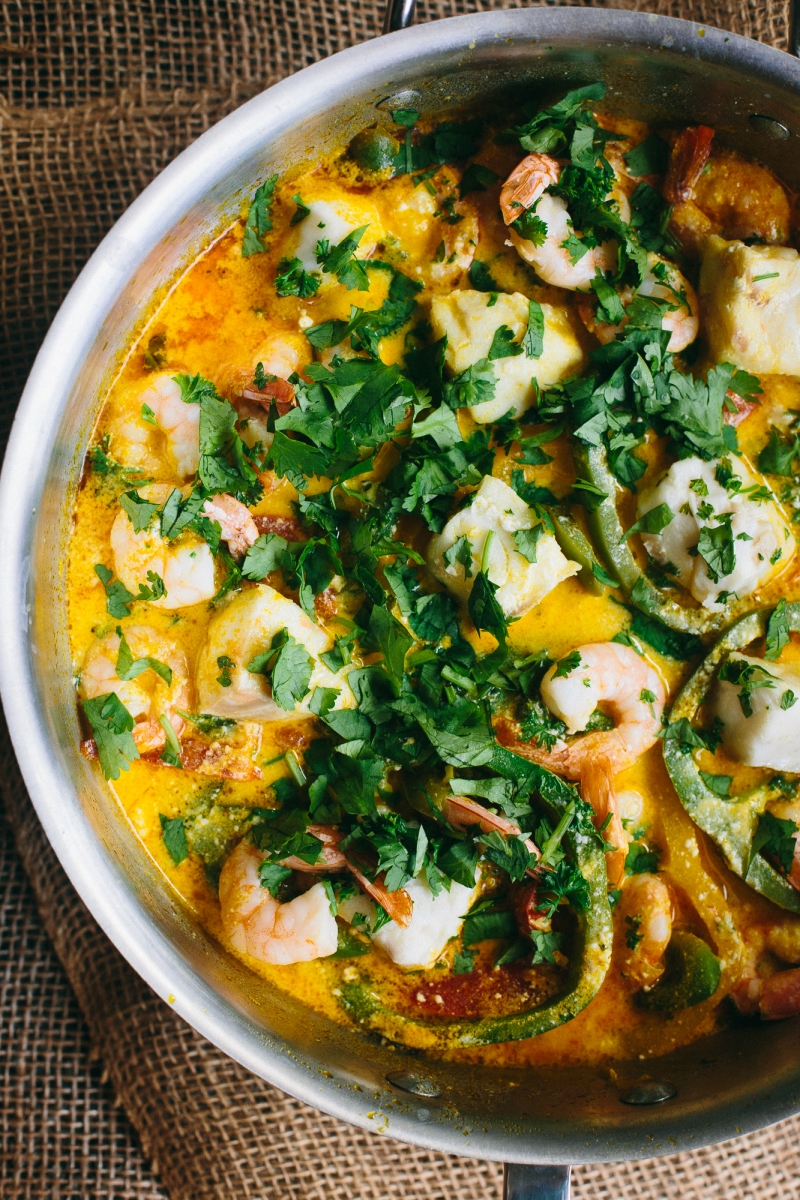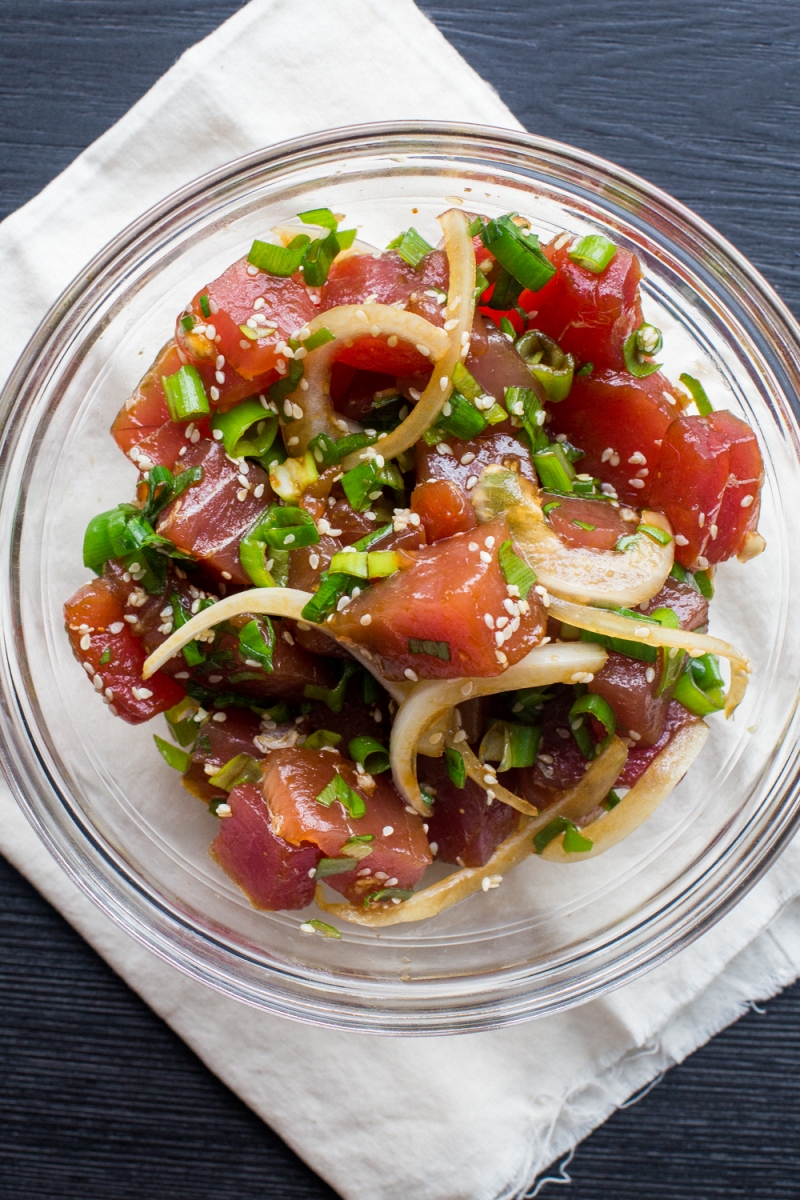
This dish is summer in a bowl, equal parts comforting and exotic.
Bobó de Camarão (sometimes called Shrimp Bobó) is a shrimp chowder dish from coastal Brazil, thickened with mashed cassava (mandioca). This stew was likely inspired by a similar, traditional West African dish made with yams, which was brought to Brazil by West African slaves during the transatlantic slave trade from the 16th to 19th centuries. Other signature flavors from this dish include buttery red palm oil (dendê) and creamy coconut milk (leite de côco).
Red palm oil, originally from West Africa, is a controversial ingredient: the majority of palm oil is produced in Southeast Asia, where deforestation of palm oil trees has negatively impacted orangutan populations. For this reason, I prefer sustainably-harvested palm oil, like this one from Nutiva; their oil is part of the “Palm Done Right” international campaign, grown and harvested in Ecuador without contributing to deforestation or habitat destruction.
Given that red palm oil requires such careful consideration, you may be wondering why bother with it in the first place. Red palm oil is high in antioxidants and vitamins A and E, and has a health-promoting fatty acid profile (about 42% each saturated and monounsaturated fats)–in truth, it has one of the best nutrient profiles among cooking fats. And from a culinary perspective, the oil imparts a rich flavor, velvety texture, and has a high smoking point (about 350F). Over the past few years, I’ve come to prefer making popcorn in red palm oil, which adds a pleasing yellow color to the final product. If you don’t have access to sustainably-harvested red palm oil, never fear: this dish is also delicious when made with coconut oil or olive oil.
This dish is relatively simple overall, but does require a few phases: first, you’ll make a seafood stock using the shrimp shells, then boil the cassava and make a flavor base using tomatoes, onions, and peppers; next, you’ll blend the flavor base with coconut milk, pan-fry the shrimp, and put it all together. To save time, you can use peeled shrimp and pre-made seafood stock. But even then, this isn’t a dish I’d recommend you first tackle on a busy weeknight–it really benefits from an unhurried cooking environment, when you can play some relaxing music and envelop yourself in these tropical aromas. It’s worth the extra bit of effort and planning.









